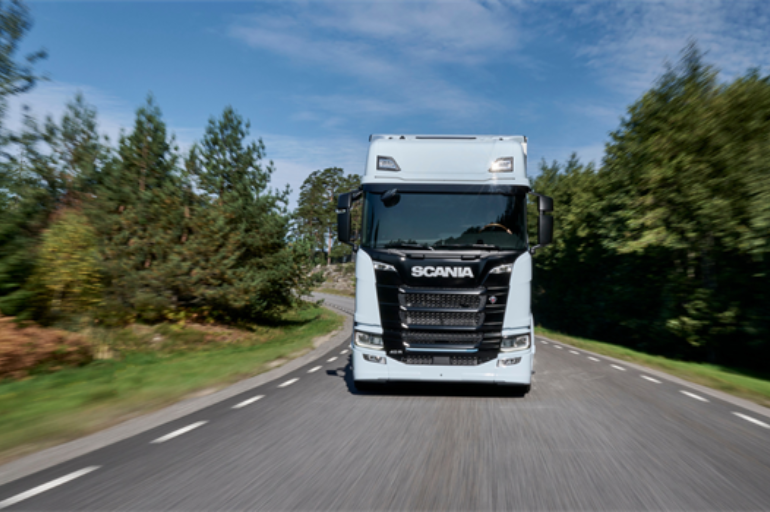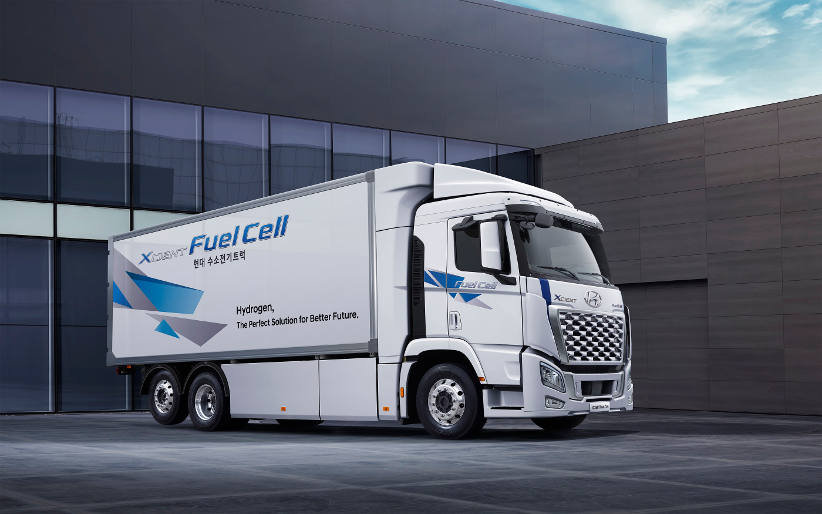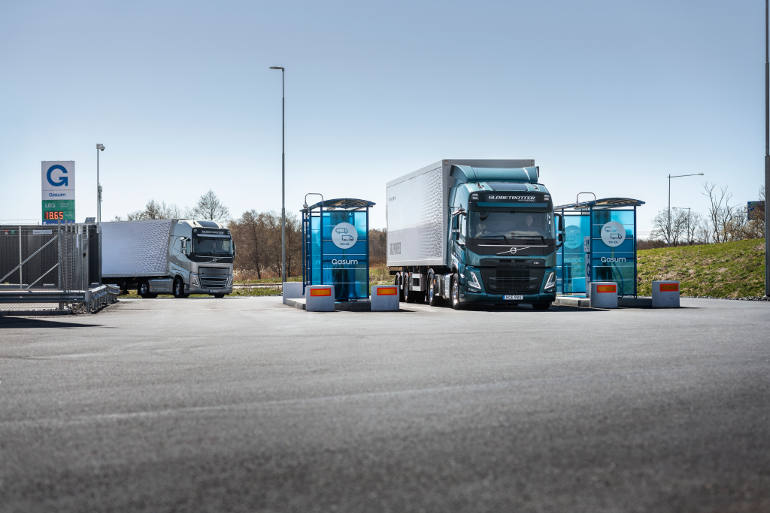Diesel-powered trucks have long been the backbone of Australian road transport and despite the buzz around zero-emission vehicles, they remain the tool of choice for interstate operators travelling long distances.
However, a significant shift towards cleaner alternatives is underway. The widespread adoption of Euro 6 emission standards and the increasing use of renewable fuels are steps that will reduce the transport industry’s environmental footprint – today.
Truck manufacturers are actively exploring a range of alternative fuels, including biodiesel, renewable diesel, hydrogen, and liquefied natural gas – all capable of powering internal combustion engines while significantly reducing emissions.
While some solutions, like renewable diesel, are already readily available in Australia, others such as liquid hydrogen represent future possibilities. Let’s take a closer look at the alternative fuels that will help to shape a cleaner transport industry into the future.
HVO
Hydrotreated vegetable oil (HVO), also known as renewable diesel, is a fuel you have probably heard about by now, as many of the latest Euro 6 engines are marketed as being HVO-compatible.
HVO has gained traction in recent years as a cleaner alternative to traditional diesel, and unlike other renewable fuels it can be safely used in most modern diesel engines without requiring fuel system or tuning changes, making it a ‘drop-in’ solution.
This alternative fuel is produced through a process called hydrotreatment, where vegetable oils, animal fats, or waste lipids are refined using hydrogen and catalysts at high heats and pressures.
The resulting fuel boasts a chemical composition remarkably similar to conventional diesel, enabling its use in most existing engines without modifications. HVO offers a high cetane number, leading to more efficient and cleaner combustion, and exhibits improved performance in cold temperatures.
The key advantage lies in its reduced greenhouse gas emissions, making it a sustainable option for industries seeking to lessen their environmental impact. Its ability to integrate seamlessly into current diesel infrastructure positions HVO as a viable solution for immediate emissions reductions in transport, as well as other diesel-reliant sectors like mining and construction.
Volvo Group Australia (VGA) has been offering a HVO ‘factory fill’ for all new Volvo and Mack trucks since late-2024, as it works to decarbonise its manufacturing operation, which showcases the alternative fuel’s readiness.
Meanwhile, fuel providers like Viva Energy Australia continue to invest in the rollout of renewable diesel locally, as well as biodiesel, supplying the road transport industry with a viable solution to reducing total emissions.

Biodiesel
Biodiesel is another renewable fuel option gaining traction in Australia, offering reduced greenhouse gas emissions compared with regular diesel while also reducing reliance on fossil fuel reserves.
The bio component consists of fatty acid methyl esters and is referred to as FAME, produced through the transesterification of vegetable oils, animal fats, or recycled cooking oils. This process yields a fuel that can be blended with conventional diesel in varying ratios, offering a pathway to reduced emissions.
In Australia, the ratios typically offered are B5 – meaning a ratio of five percent biodiesel to 95 percent conventional diesel – and B20 . Ratios as high as B100 exist, but at such high concentrations biodiesel is rarely used in transport applications.
Unlike HVO, the compatibility of biodiesel with diesel engines is a key consideration, particularly in older models, where issues with seals and hoses may arise due to biodiesel’s solvent properties.
Cold-weather performance can also be an issue, as biodiesel is prone to gelling at lower temperatures – particularly in higher concentration blends. Careful fuel storage and handling are essential to prevent these issues.
In Australia, there’s a growing interest in biodiesel, especially in sectors aiming to minimise their carbon footprint, but it is not yet widely available. The development of supply and distribution networks is underway though, emphasising the use of waste products as feedstocks to enhance the fuel’s sustainability further.
The beauty of Biodiesel is that, like HVO, regular diesel can be substituted in situations where it is not available. Manufacturers like Volvo, Scania, MAN, DAF, IVECO and Mercedes-Benz produce trucks that can run on biodiesel – some even compatible with blends as concentrated as B100.

Hydrogen
You might know hydrogen to be a chemical element, and you’d be right, but it’s also an emerging alternative fuel. Hydrogen is most commonly produced through a process called steam methane reforming (SMR), and is used in gas form or as a liquid when cooled to extremely low temperatures.
Early examples of hydrogen vehicles have been powered by fuel cells, meaning hydrogen is used to generate electricity to power motors. These fuel cells combine hydrogen and oxygen, in a reaction that generates electricity, heat and water.
Hydrogen fuel cells effectively extend the range of battery electric vehicles, providing electricity from an onboard source rather than by charging alone.
More recently, hydrogen has been used to power combustion engines, making it an alternative fuel source to diesel. These engines, modified to burn the alternative fuel, can use either gaseous or liquid hydrogen, with the latter proving to be more energy dense.
While liquid hydrogen is more energy dense, it must be stored at or below -253 degrees celsius to maintain its liquid state, requiring specialised onboard equipment. In vehicles using liquid hydrogen, it is typically stored in cryogenic tanks.
Another consideration that impacts the sustainability of hydrogen, is how it is produced. Green hydrogen is produced using renewable energy sources, making it a low-carbon option, while grey hydrogen is produced using natural gas or coal, releasing larger amounts of carbon into the atmosphere.
Various truckmakers are experimenting with both fuel cell and internal combustion hydrogen models but, unlike HVO and biodiesel, the fuel source is not cross-compatible with regular diesel.
Hydrogen refuelling infrastructure is lacking in Australia, but is expanding as the government and private sector work together to develop facilities that both produce and supply hydrogen, meaning the fuel source is likely to become more viable in the near future.

Liquefied Natural Gas
Truckmakers have turned their attention to liquefied natural gas (LNG), which is a similar fuel source to Liquefied Petroleum Gas (LPG) that has been used in vehicles around the world since the 1940s.
The LPG many of you will remember, which powered taxis around the nation, consists primarily of propane and butane and is liquefied under pressure at ambient temperatures. LNG, on the other hand, is made up of primarily methane and is liquefied through cryogenic cooling – similar to the liquefaction of hydrogen.
While LNG offers emissions reductions, bio-LNG, which uses biomethane from renewable sources like organic waste, offers even greater benefits.
Like hydrogen, liquefied natural gas is significantly more energy dense. In fact, the process of liquefying LNG reduces its volume by around 600 times, allowing significantly more fuel to be stored onboard a vehicle.
LNG offers reduced CO2 and NOx emissions than diesel, and bio-LNG takes these emissions reductions even further. Scania suggests that using bio-LNG in its gas-compatible trucks can reduce CO2 emissions by between 50 and 90 percent, and wheel-to-well emissions by around 80 percent – while still offering a range of up to 1800km.
This makes LNG a viable ‘bridging’ alternative fuel source, like HVO and biodiesel, offering reduced emissions while hydrogen and electric vehicle infrastructure is developed.

Australia’s road transport industry is undergoing a significant transition towards alternative fuels, driven by the need to reduce emissions and enhance sustainability, with options that can be used in your fleet right now. The question is, would you consider using an alternative fuel for your fleet?






